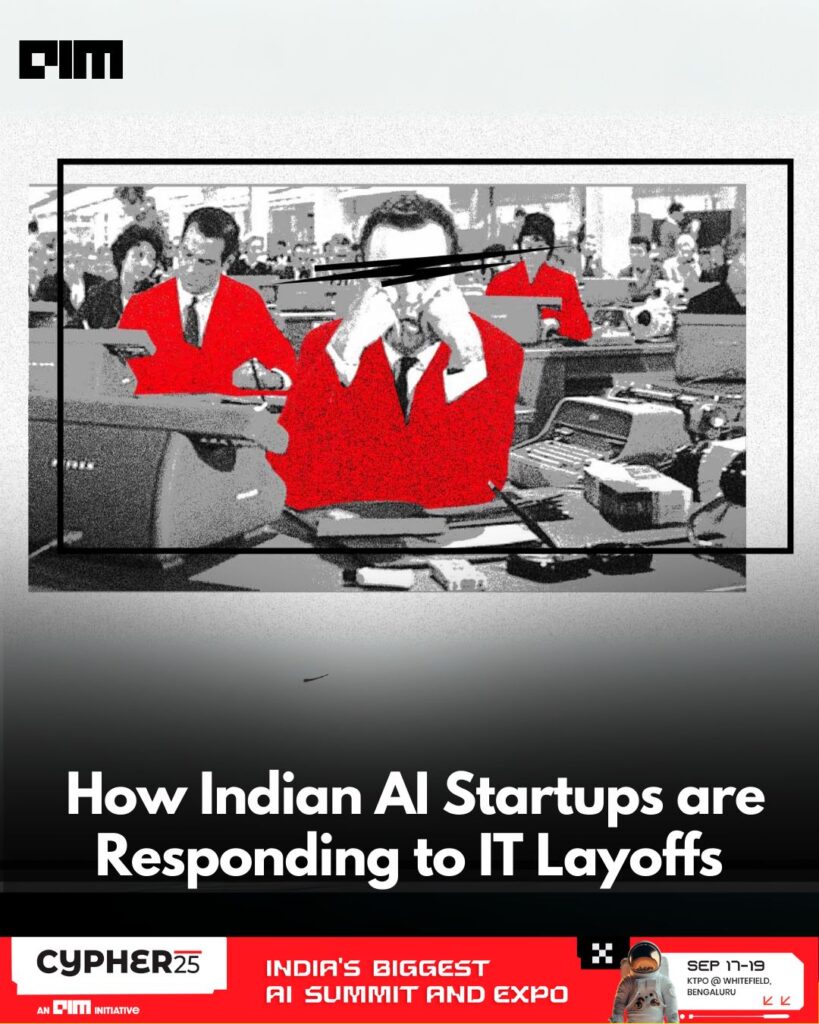Massive IT layoffs in India are creating unexpected opportunities for AI startups, which are swiftly onboarding displaced professionals to fill critical engineering and data roles. Such movements present short-term benefits in acquiring experienced talent but come with potential integration hurdles. According to experts like Aditya Singh Gaur, deputy manager at C3iHub, IIT Kanpur, the challenge of integrating laid-off employees lies in managing their elevated expectations stemming from previous roles. This situation prompts a broader hiring dilemma: whether to retrain experienced IT professionals or rely on AI-native fresh graduates.
Anil Agarwal, CEO and co-founder of InCruiter, emphasizes the value that laid-off workers can bring due to their problem-solving skills, system knowledge, and adherence to processes. These attributes make them a substantial asset in the immediate term. Nonetheless, considerations around retraining expenses and ensuring cultural alignment pose significant challenges for long-term retention. Agarwal suggests that creating a reskilling feedback loop can benefit both startups and displaced professionals, resulting in enhanced retention rates and quicker scalability.
As the landscape shifts, industry voices are rallying around reskilling as the quintessential differentiator. Ritesh Malhotra from Great Learning highlights that enterprises are increasingly integrating a generative AI knowledge layer within their workforce to enhance efficiency and productivity. Internal talent development not only augments return on investment but also minimizes recruitment costs. However, the existing ‘efficiency gap’ in India’s AI ecosystem—characterized by high valuations coupled with low per-capita productivity—remains a significant barrier to achieving sustainable growth, according to Gaur.
In response to these developments, academic institutions are stepping in to fill the skills gap. For instance, IIT Kanpur has established the Wadhwani School of Advanced AI and Intelligent Systems, while other IITs like Kharagpur and Madras are now offering AI-centric Bachelor of Technology programs. Despite these efforts, Malhotra asserts that long-term success hinges less on academic credentials and more on essential traits such as adaptability, problem-solving capacity, and an eagerness to learn. These are the characteristics that startups must embrace to transform layoffs into ongoing opportunities.
Amid these dynamics, AI startups are likely to encounter common problems that require adept troubleshooting, particularly as they navigate the intricacies of automation. Issues related to errors in AI systems, API rate limits, and integration obstacles are some of the most pressing challenges these organizations face. Addressing these problems requires systematic troubleshooting to ensure that both efficiency and productivity remain intact.
Common errors in automation often stem from incorrect data input or configuration settings. A practical approach to troubleshooting involves first verifying the data being fed into AI models. In many cases, even minor discrepancies can result in significant errors. Developing a standard operating procedure for data validation can mitigate these kinds of problems. Regular audits can also uncover systematic flaws, such as data quality issues, that could derail performance.
Another frequent challenge arises from API rate limits, which can impede the performance of applications relying on third-party data sources. When these limits are reached, APIs may either return an error or halt further requests. To efficiently manage this issue, developers should implement a retry mechanism that respects rate limits, adequately spacing requests to avoid overwhelming the API. Utilizing tools that monitor API usage can also provide insights into rate limit patterns, allowing developers to better plan their resource needs.
Integration issues can also plague the adoption of AI technologies. The complexity of merging different systems can result in data silos, API mismatches, or inconsistent workflows. A systematic approach to integration should begin with a thorough mapping of the existing systems. This assessment should identify compatible interfaces, data formats, and workflows. Utilizing middleware solutions can facilitate smoother integration processes, enabling disparate systems to communicate effectively without needing extensive modifications.
The risks associated with failing to resolve these issues swiftly are considerable. Organizations may face significant downtime, eroded customer trust, and lost revenue opportunities. Additionally, unresolved automation errors can lead to cascading failures throughout various functions. By implementing prompt error resolution strategies, businesses can experience a tangible return on investment through increased operational efficiency and improved service delivery.
In summary, as the IT landscape continues to evolve in the wake of layoffs, the challenges associated with automation are both pronounced and critical. By adopting structured troubleshooting approaches, organizations can effectively manage common pitfalls while capitalizing on the wealth of talent emerging in the market.
FlowMind AI Insight: Addressing automation errors expeditiously is not merely a technical necessity but a strategic imperative that can enhance overall productivity and profitability. Embracing reskilling initiatives will further empower organizations to adapt swiftly to the rapidly changing AI landscape, unlocking lasting benefits amidst emerging challenges.
Original article: Read here
2025-08-25 08:55:00

